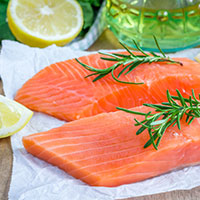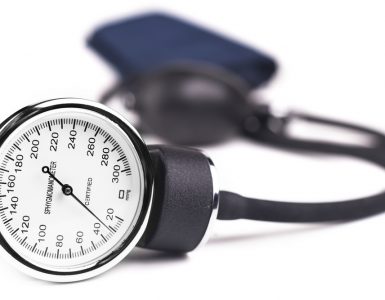| Nutrient name |
Omega-3 fatty acids |
| What are they used for? | Healthy skin, brain, heart, joints and hormones |
| Best food sources | Oily fish, walnuts, pumpkin seeds, flaxseeds, chia, hemp |
| How much do I need? | No NRV* has been established |
| Need to know | Omega-3 fats cannot be made in the body so need to be eaten in the daily diet |
*A Nutrient Reference Value or NRV is the recommended level set by the UK Department of Health for daily nutrient intake
Omega-3 fats
The omega-3s are also known as essential fats. This is because the body cannot make them and they have to be eaten very regularly in the diet. The chemical structure of these polyunsaturated fats also means they’re very healthy for the body.
Why do I need them?
Their chemical structure contains three double bonds, ensuring these fats provide flexibility for cell membranes; they are an intrinsic part of all our cellular make-up.
Plant-based omega-3 fats are derived from alpha linolenic acid (ALA). The body converts plant-sourced ALA, such as that found in flaxseed and walnuts, into two substances called EPA and DHA; these provide a range of positive health benefits particularly for the joints, skin, eyes, brain and hormones. However, most of the cellular health benefits are linked to animal-based EPA and DHA, found in oily fish.
The conversion from ALA to EPA and DHA enables the body to produce prostaglandins – hormone-like compounds which provide wonderful health benefits. These compounds provide positive anti-inflammatory effects throughout the whole body and also help to manage blood pressure, support good circulation, regulate cholesterol levels and maximise brain function.
Omega-3s have also been shown to provide positive effects on children’s brain development, behaviour and intellect.
Best food sources
Whilst the body converts plant-based ALA to EPA and DHA, the conversion rate can actually be quite small. Flaxseeds are a great source of omega-3 fats, but the body still needs to convert them to EPA and DHA for the greatest benefits. Therefore despite their high omega-3 content, it is still not as efficient as eating oily fish.
Five foods high in omega-3 fats

Flaxseeds – 56 g per 100g

Walnut oil – 10g per 100g

Mackerel – 5.2g per 100g

Wild salmon – 2.6g per 100g

Sardines – 1.7g per 100g
Are you getting enough?
Because these fats have to be eaten very regularly in the diet, and many people tend not to eat enough foods containing omega-3s, this means that deficiencies may be fairly widespread. Symptoms of deficiency are fairly non-specific.
For example, constipation, dry skin, high blood pressure, learning and behavioural difficulties in children and depression and mood changes may all be improved by including more omega-3s in the diet, or adding an omega-3 supplement.
Did you know?
Wild salmon contains more omega-3s than farmed salmon as well as less environmental toxinsDHA plays such an important role in brain health that it should be supplemented during pregnancy
Omega-3s are safe and should be encouraged during pregnancy and breast feeding at recommended dosages, but always consult your healthcare professional for advice
Omega-3s are better absorbed when eaten as food or taken as supplements with other fatty foods
To find out everything you need to know about flaxseed click here







